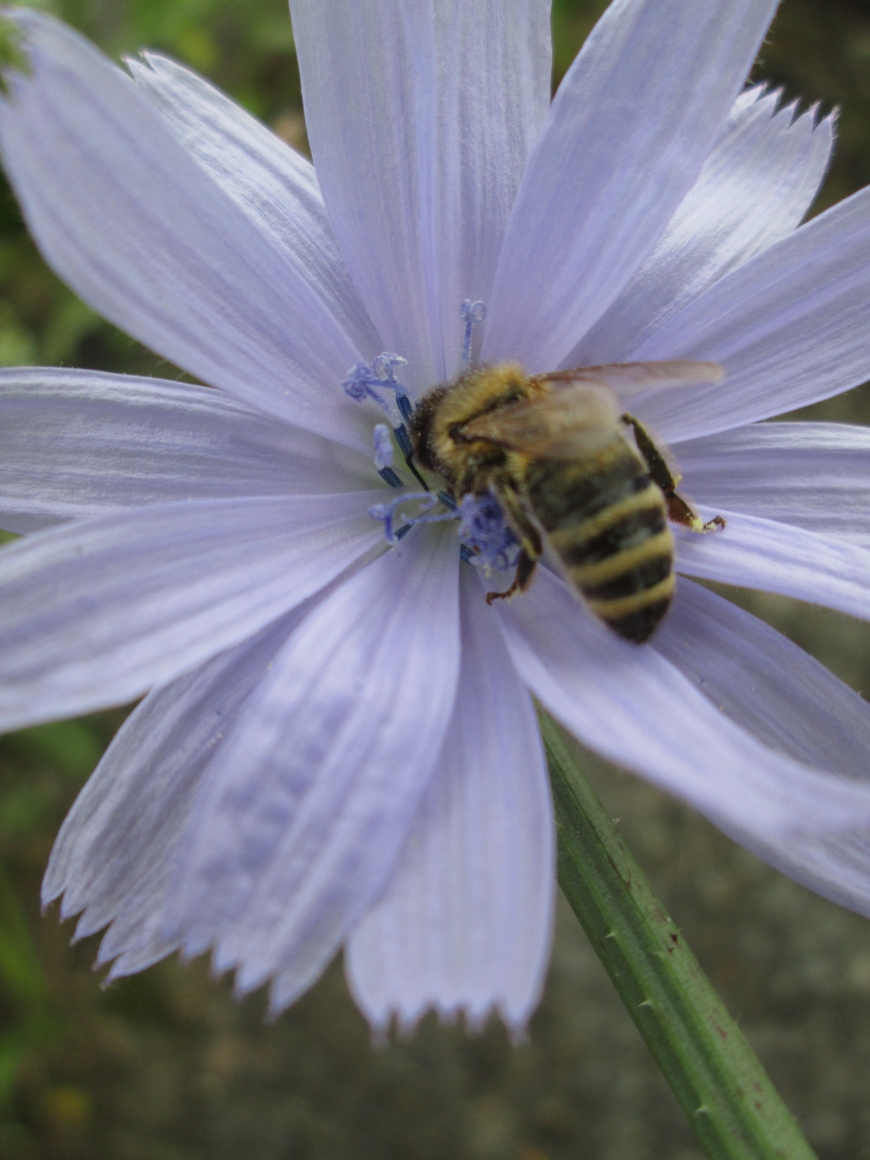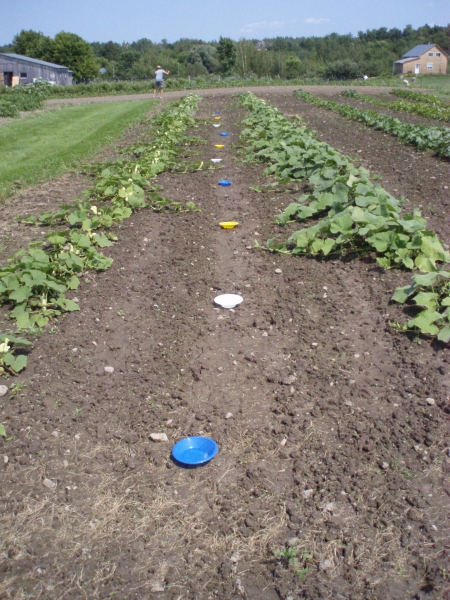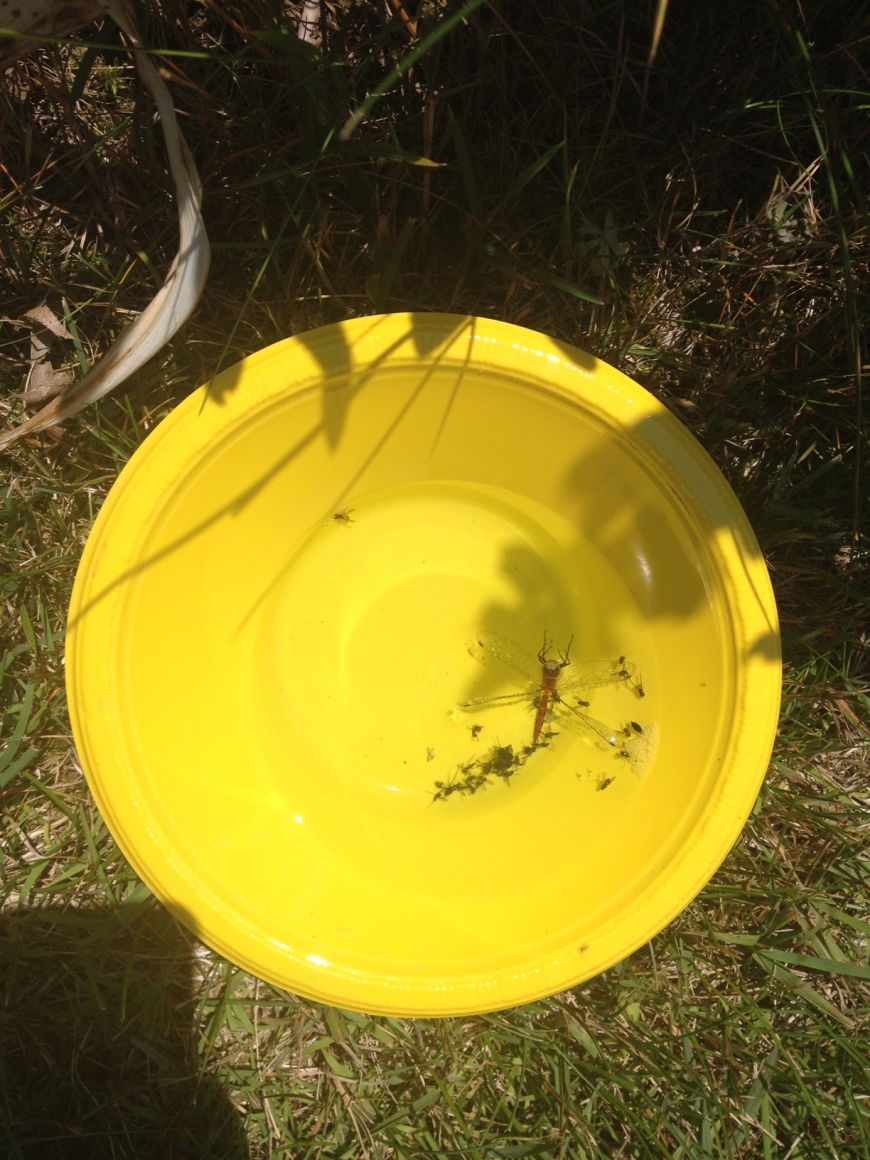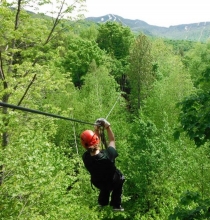


European honeybee. Photo: Jennifer Berbich.
Pollinator pan traps in a vegetable garden. Photo: Samantha Haab
Colorful pan traps mimic flowers to attract pollinators. Photo: Samantha Haab



A Bounty of Bees in our North Country Gardens
The buzzing of bees is as much a sound of summer in the North Country as is the drone of cicadas or the nighttime call of frogs. It is, hopefully, a common sound we hear outside during the summer and fall months, but just what kinds of bees are in our gardens and why should we care?
We’re all familiar with honey bees and the larger, more conspicuous bumble bees, but what many people fail to realize is that there are over 20,000 different species of bees worldwide, 4,000 different species in North America, and close to 350 different species inhabiting northern New York and regions of Canada. With such astounding diversity, wild bee species come in all different shapes, sizes, and colors, serving as a key group of insect pollinators.
In conjunction with other insect pollinators, wild bees contribute to the successful production of $40 billion worth of agricultural products in the United States each year and are additionally responsible for the production of as much as 25 percent of everything we eat and drink. What makes bees particularly important insect pollinators is the fact that they deliberately seek out and collect pollen to bring back to their nests to feed to their larvae. They also practice what is known as flower constancy, meaning that on any given foraging trip they tend to focus on one particular plant species, thus making pollination more efficient by ensuring that pollen from one flower is delivered to another, compatible flower of the same species.
Although much of the focus centers on honey bee populations (Apis mellifera—a non-native species introduced from Europe) commonly used to pollinate large-scale commercial agricultural crops, wild bees are the unsung heroes of smaller agricultural enterprises common throughout the North Country. Although wild bee species are often overlooked, my summer research focused solely on wild bee species found in and around North Country farms and gardens.
Specifically, I collected bees at twelve different sites in an attempt to see if surrounding wildflower diversity enhances the abundance and variety of bee species pollinating vegetable crops. In order to collect the bee specimens, I used a technique known as pan-trapping where I placed blue, white, and yellow bowls filled with diluted soap water along rows of flowering vegetable crops and near patches of adjacent wildflowers. The blue, white, and yellow colors mimic flowers, thereby attracting pollinators, and the addition of soap to the water decreases the surface tension so that whatever lands on the surface will become trapped in the bowl.
Sampling on sunny days between 11am and 3pm (optimal time for bee foraging) over the course of eight weeks, I collected nearly 1800 bee specimens. While these specimens account for only a very small percentage of the total population of wild bee species found in North Country gardens, analyzing their population composition in terms of species richness (number of different bee species found) and their relative abundance (the number of individuals per species) can offer important insight into the protection and enhancement of forage and nesting habitat to promote a diverse and resilient community of wild bee pollinators in St. Lawrence County.
With that in mind, let’s take a look at some of the common types of bees I found in North Country gardens this summer to get a better idea of who’s in your garden:
Ceratina

Image: Ted Kropiewnicki / www.discoverlife.org
The Ceratina bee genus consists of nearly 350 different species distributed worldwide and 22 species in North America . Otherwise known as the “small carpenter bees,” members of this genus make nests in dead wood or plant stems. These bees are commonly dark in color and are distinguished by having sparse body hair and some yellow markings, usually on the face. These bees are particularly efficient pollinators of beans and apples.
Nomada

Image: Laurence Packer / www.discoverlife.org
This genus consists of over 850 different bee species worldwide and over 270 different species in North America, making it one of the largest genera of cuckoo bees. As cuckoo bees, species within this genus parasitize other bee species by laying their eggs in active nests constructed and provisioned by the host species where their larvae can then hatch and feed off of the pollen collected by the host species. These bees are normally red or yellow in color and are nearly hairless—lacking the dense hairs needed by other species for pollen collection.
Lasioglossum

Image: Gideon Pisanty / www.discoverlife.org
The largest of all bee genera, Lasioglossum is comprised of 1700 different species worldwide and 280 species in North America. Most species in this genus nest in the ground, but some also nest in rotten logs. These bees are typically small and black in color, often with bands of light hairs. Belonging to the Halictidae bee family, Lasioglossum is one the genera commonly referred to as “sweat bees” because they are attracted to human sweat, which they drink in order to obtain salts. They are known to pollinate numerous crop plants including sunflowers, sweet potatoes, cucumbers, asparagus, peas, and strawberries.
Augochlora, Augochloropsis, and Augochlorella

Image: Hadel Go / www.discoverlife.org
These three genera of bees are also members of the Halictidae family of sweat bees. Between the three genera, there are 14 different species found in North America. They are known to inhabit forest and farmland, and they build their nests either in the ground or in rotten wood. Perhaps the most visually striking of all bee genera, these bees are characterized by their bright, metallic-green coloration. They are particularly effective pollinators of okra, melon, apples, and squash.
Hylaeus

Image: Linda Dahlberg / www.discoverlife.org
The small (typically 5-7mm) black bees comprising this genus are commonly called “masked bees” due to the characteristic white or yellow markings on their face, legs, and sides. They appear nearly hairless and carry pollen internally in their crop (a digestive organ), regurgitating it into their nest to provision their larvae with food. There are 700 different species worldwide and 14 species in North America. Hylaeus bees typically nest in dead twigs or plant stems.

